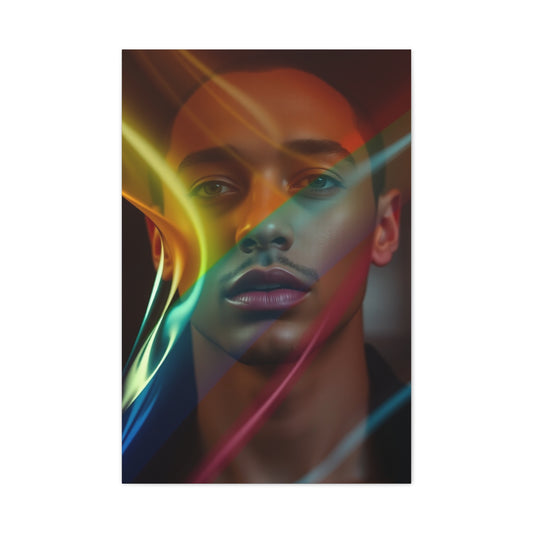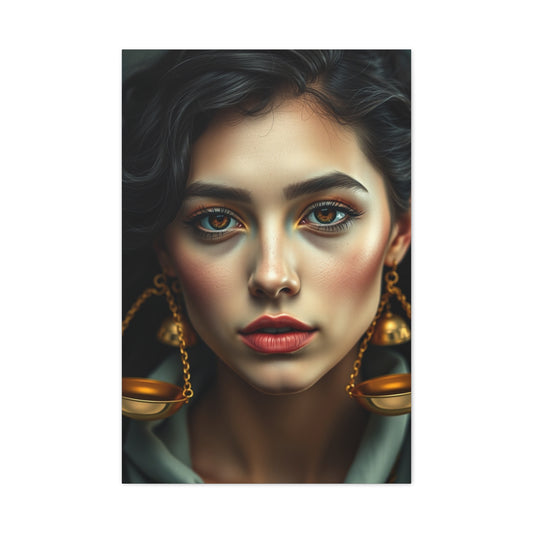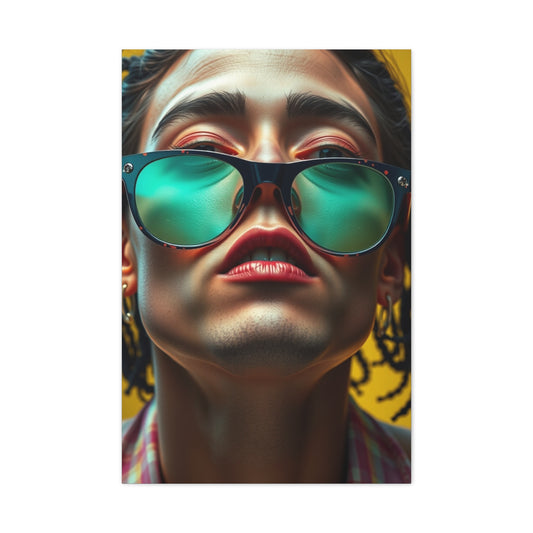The Struggles of Solvent Exposure: A Personal Tale of Health Concerns and Artistic Pursuits
As an oil painter, the act of creating is as fulfilling as it is intimate, allowing us to express complex emotions and visions through a medium that has stood the test of time. Yet, behind the joy of crafting oil paintings lies a significant challenge that many artists face: the toxicity of traditional painting solvents. My journey with these harmful substances began with a series of skin reactions caused by exposure to odorless mineral spirits (OMS) and turpentine. What was once an unremarkable part of my routineusing solvents to thin my paints and clean brushesbecame a source of painful consequences that I couldn’t ignore. This prompted me to take a hard look at the solvents I had been using and the risks they posed to my health.
In a profession that demands long hours near the medium, the fumes from OMS and turpentine became unbearable. They triggered severe allergic reactions, causing skin rashes and respiratory distress. These experiences were not only physically draining but mentally exhausting as well, casting a shadow over the creative process I had once enjoyed. The need for a solution that would allow me to continue painting without sacrificing my health became paramount. But as I searched for alternatives, I quickly realized that the world of non-toxic, solvent-free art supplies was still in its infancy. While the demand for safer products has grown in recent years, the options available to artists are often more expensive and less effective than their traditional, toxic counterparts.
The shift toward a solvent-free studio was not an easy one. Finding affordable, reliable, and effective non-toxic alternatives for oil painting took time and trial-and-error. But through this process, I discovered several non-toxic mediums that offered the potential to replace harmful solvents. One such medium was the Gamblin Solvent-Free Gel Medium, which caught my attention as a safer alternative to the popular yet toxic Liquin Original. Intrigued by its promises, I decided to test it for myself.
Exploring the Gamblin Solvent-Free Gel Medium: A Viable Solution
When I first encountered Gamblin Solvent-Free Gel Medium, it was evident that it had the potential to be a game-changer in my studio. Unlike the overpowering chemical fumes of Liquin and traditional solvents, the Gamblin product offered a pleasant, mild scent that reminded me of something sweet, like candy, without any trace of toxicity. This was a welcome relief, especially for someone who had suffered from chemical sensitivities for so long. The initial impression was promising: a medium that allowed me to continue creating without the looming threat of harmful fumes. But, as with any new product, I was eager to test its performance to determine whether it could live up to the expectations set by traditional mediums like Liquin.
As I mixed the Gel Medium with oil paints, the texture and consistency were noticeably different from what I was accustomed to. While Liquin is known for its smooth, fluid quality, Gamblin’s Solvent-Free Gel had a thicker, stickier feel. This change in texture may be off-putting to some artists who prefer the ease with which Liquin glides across the canvas. However, for me, it wasn’t a dealbreaker. The stickiness of the Gel provided an unexpected tactile sensation that felt engaging rather than restrictive. It allowed me to maintain control over the paint’s movement while adding a new level of texture to my work. The trade-off, while noticeable, was a small price to pay for the peace of mind that came with knowing I was working in a healthier, solvent-free environment.
What stood out most, however, was the performance of the medium in terms of finish and drying time. Just like Liquin, the Solvent-Free Gel helped achieve a smooth, glossy finish on the painted surface, providing a similar level of control over the consistency and flow of the paint. The one notable difference was the Gel’s drying time, which, while still within a reasonable range, was slightly slower compared to Liquin. Despite this difference, I found myself adapting quickly, realizing that the extra time allowed me to work more deliberately, without the pressure of rapidly drying paint. The Gel also exhibited excellent handling properties, allowing me to layer and manipulate the paint with ease, giving me the flexibility to create detailed, multi-layered compositions.
The Transition to a Solvent-Free Studio: Embracing Healthier Practices
As I continued to use Gamblin Solvent-Free Gel Medium, it became clear that the benefits extended beyond just the absence of toxic fumes. It was a relief to breathe freely in my studio again, without worrying about the detrimental effects of inhaling harmful vapors. The physical comfort and mental clarity I experienced while painting without the oppressive presence of solvent fumes significantly enhanced my creative process. The studio, once a place of discomfort, transformed into a sanctuary space where I could fully immerse myself in my work without concern for my health.
However, making the full transition to a solvent-free studio environment was not without its challenges. As much as I appreciated the non-toxic properties of the Gamblin Solvent-Free Gel Medium, I found myself having to adjust to subtle differences in texture and performance. The thicker consistency of the Gel, while not a problem for me, might pose challenges for other artists who are accustomed to the fluidity of Liquin or traditional solvents. Furthermore, the higher price point of non-toxic mediums like Gamblin’s Gel was another consideration. The art supply market for solvent-free products remains relatively small, and as a result, these alternatives tend to come at a premium. This disparity in cost can make it difficult for artists on a budget to make the switch, but for me, the long-term health benefits outweighed the additional financial burden.
The decision to embrace a solvent-free studio practice has been one of the most rewarding choices I’ve made as an artist. Despite the occasional compromise in texture or drying time, the sense of well-being and peace of mind that comes with working in a non-toxic environment has been transformative. I no longer worry about skin reactions or respiratory issues, and I’ve gained a renewed sense of freedom in my creative expression. The shift away from traditional solvents has not only improved my physical health but has also encouraged a deeper connection with my art.
Looking ahead, I remain hopeful that the market for solvent-free art supplies will continue to evolve. There is a growing demand for safer alternatives, and I’m excited to see innovations that may offer even better performance or additional options for non-toxic mediums. In the meantime, I continue to experiment with Gamblin Solvent-Free Gel Medium, confident that I have found a reliable and safe solution that allows me to paint with freedom and without compromise. Though the journey toward a solvent-free studio has not been without obstacles, the rewards are clear: a healthier workspace, a more enjoyable painting process, and, most importantly, the ability to create art without the fear of toxic exposure.
Exploring Non-Toxic Mediums: The Growing Demand for Safer Alternatives
As an oil painter, selecting the ideal medium is just as crucial as choosing the right paint. While traditional mediums like Liquin and solvents have long been staples in the art world, there’s an increasing shift toward non-toxic, environmentally friendly options. Over the years, I’ve gravitated toward Gamblin Solvent-Free Gel Medium for its versatility and non-toxic nature. However, as I continue to explore, my curiosity has led me to seek other alternatives, particularly liquid mediums that provide a different painting experience.
Among these, M. Graham’s Walnut Alkyd Medium stands out as an intriguing option. What caught my attention wasn’t just its non-toxic formula but also its fluid, almost inky consistency. The faint aroma of walnut oil, reminiscent of freshly baked banana bread, adds a sensory layer to the painting experience that is both soothing and delightful. As an artist, I’ve always appreciated how important it is to have mediums that complement my style. M. Graham’s Walnut Alkyd has proven to be an excellent choice for those seeking a medium that offers fluidity while maintaining a high-quality finish without the harsh chemicals found in traditional mediums.
The Pleasures of M. Graham’s Walnut Alkyd Medium: A Non-Toxic Revolution for Fluidity
M. Graham’s Walnut Alkyd Medium offers a distinct advantage over traditional liquid mediums like Liquin. While Liquin is known for its quick-drying, smooth, and even finish, the Walnut Alkyd Medium provides a softer, more flowing consistency that allows for greater fluidity and ease of movement when painting. The ability to work with a medium that feels more like liquid ink than the thicker, more viscous substances typically used in oil painting is a refreshing change. It’s an ideal medium for artists who appreciate a lighter painting process with a focus on fluid strokes and less resistance on the brush.
What truly sets Walnut Alkyd Medium apart is its unique combination of a non-toxic formulation and its smooth, fluid texture. The walnut oil base offers a gentle alternative to the toxic solvents and petroleum-based products that many artists have historically used. Unlike traditional mediums that may release harmful fumes or require ventilation, this walnut-based medium provides a safer alternative, creating a more pleasant and comfortable working environment.
The medium's mild walnut scent also adds to the overall experience, offering a more enjoyable and less chemically pungent atmosphere. For artists with sensitivities or those working in smaller spaces, the absence of harsh odors is a huge advantage. The fact that it is non-toxic means it poses no risk to those who are concerned about prolonged exposure to harmful chemicals in the studio.
In my experience, this medium works particularly well for loose and expressive styles. The fluidity of the Walnut Alkyd allows for quick and seamless brushstrokes, creating a dynamic, free-flowing painting experience that invites exploration and creativity. It’s perfect for artists who wish to focus on movement, layering, and blending without the constraints of thicker, more restrictive mediums.
Exploring the Trade-Offs: Balancing Fluidity with Texture in Non-Toxic Mediums
While the Walnut Alkyd Medium has become a beloved tool in my studio, it’s not without its trade-offs, particularly when compared to other mediums like Liquin Original. Liquin is renowned for its ability to provide an even, smooth finish, particularly useful when covering large areas or working on backgrounds. It helps maintain a high level of control when applying a layer of paint across a large, flat surface. The medium’s quick-drying nature ensures that artists can move from one layer to the next without long waits, a key benefit for those working on tight deadlines or in environments that require rapid progress.
On the other hand, Walnut Alkyd’s more fluid nature, though a joy to work with, may not provide the same level of control, especially when working on broader surfaces or fine details. This is an important consideration for artists who require precision and uniformity in their medium. The inky consistency of Walnut Alkyd Medium may not yield the same smooth, even finish that Liquin can deliver, making it less ideal for those looking for a medium that creates flawless, high-gloss surfaces. The smoothness of Liquin offers a higher degree of predictability, especially when layering or gliding the brush across the canvas with intention.
However, the benefits of Walnut Alkyd far outweigh this limitation in many painting contexts. Its ability to create flowing, organic strokes and support a looser, more spontaneous style makes it a valuable tool for artists who prioritize freedom of expression over meticulous detail. In my practice, I’ve found that it excels in applications that involve softer transitions and free-form gestures, which can sometimes feel restrictive with thicker, more rigid mediums. The fluidity of Walnut Alkyd lends itself beautifully to blending, layering, and even creating a sense of movement within the composition, something that thicker, more viscous mediums may struggle to replicate. This characteristic can elevate the emotional energy of a piece, giving it a sense of immediacy that a more controlled finish simply cannot convey.
For large areas, however, it might not be the best option, especially if a perfectly smooth and even finish is required. The inherent liquidity of Walnut Alkyd can make achieving a uniform, glossy surface challenging, particularly for artists who lean towards a more structured and refined finish. Its tendency to create visible brushstrokes, though appealing in certain contexts, can detract from the level of finesse that other mediums like Liquin deliver. Nevertheless, this can also be viewed as a potential advantage, depending on the type of work being created.
Despite these differences, M. Graham’s Walnut Alkyd Medium is still one of the best non-toxic mediums I’ve encountered for liquid consistency. It has successfully allowed me to achieve the kind of painting process I enjoyone that feels natural and unrestricted while still providing the necessary support for my creative needs. The non-toxic nature of the medium is especially important for those of us who are conscious about the health impacts of the materials we use, offering peace of mind while working in a studio environment. Artists who are more comfortable working with a looser, free-flowing technique will likely find it particularly appealing, as its fluidity fosters a sense of discovery and responsiveness that is difficult to replicate with more rigid, controlled mediums.
The Future of Non-Toxic Mediums: A Revolution in Oil Painting
The increasing availability of non-toxic mediums marks an exciting shift in the world of oil painting. In the past, artists had limited options when it came to solvents and mediums that didn’t pose health risks. Exposure to chemicals like turpentine and other volatile solvents could lead to serious health concerns over time, whether it be through skin irritation, respiratory issues, or long-term neurological damage. For artists with sensitivities, the choice of medium has always been a delicate balancing act between safety and performance.
However, the growing awareness of these issues, coupled with the advances in non-toxic formulation technology, has led to a surge of safer alternatives. Companies like M. Graham and Gamblin are at the forefront of this movement, crafting products that not only perform well but also protect the health of the artist. These developments are particularly important for individuals who suffer from allergies, asthma, or other health conditions that make traditional oil painting mediums difficult to use.
Although non-toxic oil painting mediums still come with a higher price tag compared to traditional solvents, the health benefits they offer are invaluable. For many artists, the ability to paint without worrying about harmful chemical exposure is priceless. These mediums are helping to make the painting process more accessible, especially for those who would otherwise be unable to work with traditional materials due to health concerns. Furthermore, as more artists embrace these alternatives, the range of non-toxic options is likely to expand, offering even more choices for different painting techniques and preferences.
The future of non-toxic mediums looks promising, and I’m excited to continue exploring the various products available on the market. As more innovative solutions become available, artists can look forward to a broader selection of mediums that offer the same high quality as traditional solvents, without the associated risks. This evolution in oil painting materials is also an encouraging sign that the art world is becoming increasingly mindful of the health and well-being of its creators.
As an artist, I can now paint with peace of mind, knowing that I can create freely without compromising my health. It’s a thrilling prospect, and I look forward to discovering more non-toxic products that align with my artistic vision. With the growing demand for safe, eco-friendly materials, it’s clear that the future of oil painting is on the cusp of a transformative shiftone that prioritizes both the artist’s safety and the environment.
Varnishing without the Toxins: A Comprehensive Look at Gamvar and Winsor & Newton Varnishes
When it comes to oil painting, varnishing is a crucial step that adds a final layer of protection while enhancing the beauty of the artwork. However, for many artists, the varnishing process traditionally involves the use of harmful solvents and toxic chemicals. After encountering adverse reactions from Michael Harding’s Dammar Varnish V1, which contains turpentine, I decided to explore safer, non-toxic varnishing alternatives. This journey led me to discover two outstanding varnishes: Gamvar Picture Varnish and Winsor & Newton Artists’ Gloss Varnish. Both of these products provide excellent results without the harmful fumes, making them ideal for artists who prioritize safety and health. In this article, we will delve into the unique features of each varnish and how they can enhance the final presentation of oil paintings.
Gamvar Picture Varnish: A Satin-Gloss Marvel
Gamvar Picture Varnish has quickly become a preferred choice for many artists, particularly those who value a non-toxic and user-friendly product. One of the standout qualities of Gamvar is its satin-gloss finish, which adds a subtle yet refined sheen to the artwork. This finish enhances the depth and vibrancy of the colors in an oil painting without overpowering the natural beauty of the piece. The satin finish creates a rich, lustrous effect that doesn’t detract from the details, offering a perfect balance between gloss and matte.
What sets Gamvar apart from other varnishes is its non-toxic nature. Many traditional varnishes, such as those containing turpentine or other solvents, can produce strong fumes that cause discomfort and health issues for artists. Gamvar, on the other hand, is completely safe to use, making it ideal for those with sensitivities to chemical fumes or anyone working in a poorly ventilated environment. Artists can apply Gamvar with confidence, knowing that they are protecting both their artwork and their health.
Despite its liquid consistency when first applied, Gamvar dries to a smooth, satin finish that helps to bring out the richness of colors without a glossy appearance. This is particularly important for artists who prefer a more subdued look that still enhances the depth and vibrancy of their work. Additionally, Gamvar’s ability to allow paintings to breathe is a significant advantage. Unlike some varnishes that trap moisture beneath the surface, Gamvar can be safely applied to a painting that is touch dry, preventing any residual moisture from being sealed inside. This ensures that the painting remains in optimal condition, even as it ages.
While Gamvar may not achieve the ultra-high gloss that some varnishes are known for, its satin finish is ideal for many artists. It provides a professional-looking result that complements the natural look of the painting, adding an extra layer of protection without compromising the artwork’s visual appeal. Whether you’re creating portraits, landscapes, or abstract works, Gamvar provides a versatile and reliable finishing solution for all types of oil paintings.
Winsor & Newton Artists’ Gloss Varnish: The Glossy Professional Choice
For artists seeking a more traditional, glossy finish, Winsor & Newton Artists’ Gloss Varnish is a popular and professional choice. This varnish offers a crystal-clear, non-yellowing finish that gives oil paintings a brilliant, high-gloss appearance. When applied correctly, Winsor & Newton varnish saturates the colors of the painting, intensifying their vibrancy and creating a polished, lustrous surface that enhances the overall visual impact of the artwork.
The clear and non-yellowing qualities of Winsor & Newton Artists’ Gloss Varnish are particularly important for artists who want to maintain the true color of their paintings over time. Unlike some varnishes that can develop a yellow tint as they age, this varnish ensures that the colors remain fresh and vibrant for years to come. This characteristic makes it an excellent choice for artists who create works intended to be displayed for long periods or sold as high-quality pieces.
However, applying Winsor & Newton Artists’ Gloss Varnish requires a bit more precision compared to other varnishes. It’s essential to apply the varnish evenly to avoid visible brush strokes or drips, which can mar the finish and detract from the painting’s appearance. With careful application, this varnish provides a flawless, glossy surface that enhances the colors and adds depth to the work. Many artists consider the glossy finish of this varnish to be the gold standard, as it imparts a professional-quality look to their artwork.
Winsor & Newton Artists’ Gloss Varnish is not only valued for its aesthetic qualities but also for its protective properties. It creates a tough, durable layer over the painting, shielding it from dust, dirt, and environmental factors that could potentially damage the artwork. This protective layer also helps to preserve the painting’s colors, ensuring that the work maintains its visual integrity over time. Like Gamvar, Winsor & Newton varnish is non-toxic and safe to use, making it a great choice for artists who want a professional, high-quality finish without the harmful effects of traditional solvent-based varnishes.
Choosing the Right Varnish: Gamvar vs. Winsor & Newton
Both Gamvar Picture Varnish and Winsor & Newton Artists’ Gloss Varnish offer unique benefits that cater to different artistic preferences and needs. Understanding the distinct qualities of each varnish can help artists choose the one that best suits their individual style and project requirements.
Gamvar’s satin-gloss finish is ideal for those who prefer a more understated, natural look that enhances the painting’s colors without creating a highly reflective surface. Its non-toxic composition makes it an excellent choice for artists working in environments where ventilation is limited or for those who are sensitive to chemicals. The fact that Gamvar allows the painting to breathe is also a significant benefit for artists who want to ensure their work remains in top condition as it ages. Its ability to create a lustrous finish with a subtle sheen makes it a versatile option for a wide range of oil paintings, from portraits to still lifes.
In contrast, Winsor & Newton Artists’ Gloss Varnish is better suited for artists who seek a high-gloss, professional finish that saturates the colors and adds a brilliant shine to the painting. This varnish is perfect for those who want to achieve a polished, glossy surface that enhances the overall visual impact of the work. While it requires careful application to avoid brush strokes or drips, the results are stunning, providing a clear, durable layer that protects the painting while maintaining its true colors. This varnish is ideal for artists who want a glossy finish that showcases the full depth of their colors and details.
Ultimately, the choice between Gamvar and Winsor & Newton varnishes depends on the desired finish and application preferences. Both varnishes are high-quality, non-toxic alternatives to traditional solvent-based varnishes, making them safe and reliable options for artists who prioritize health and safety. Whether you prefer the satin-gloss finish of Gamvar or the brilliant gloss of Winsor & Newton, both products offer professional-level results that will enhance the beauty and longevity of your oil paintings.
In essence, varnishing is an essential step in the oil painting process, providing both protection and enhancement to the finished artwork. Traditional varnishes often rely on toxic solvents, but alternatives like Gamvar and Winsor & Newton Artists’ Gloss Varnish offer non-toxic, safe solutions that yield stunning results. By understanding the unique properties of each varnish, artists can make an informed decision about which product is best suited to their artistic needs, ensuring that their work is both visually striking and protected for years to come. Whether you're a professional artist or a hobbyist, these varnishing solutions provide a safe, effective way to finish your oil paintings without compromising on quality or safety.
The Journey Toward Safer Artistic Practices
As artists, we’ve long been drawn to the mesmerizing appeal of oil painting. The rich colors, depth of texture, and fluidity of the medium have allowed for centuries of creative expression. However, with the beauty of oil paints comes an often-overlooked risk: the harmful exposure to toxic chemicals commonly found in traditional oil painting supplies. For many years, artists have had to balance their passion for creating with the potential dangers posed by solvents, pigments, and varnishes that release harmful fumes or contain hazardous materials. The good news is that the art world is witnessing a profound transformation, as innovative, non-toxic oil painting supplies become increasingly available. This shift is helping to safeguard the health of artists and contribute to a more sustainable and eco-conscious creative environment.
Having personally struggled with the effects of solvent exposure, the growth of non-toxic alternatives has been a revelation. Solvents such as turpentine and mineral spirits, which have been essential for thinning paint and cleaning brushes, have long been known to release volatile organic compounds (VOCs). These compounds can cause a range of health problems, from headaches and dizziness to long-term respiratory issues. For years, these risks have been an unavoidable part of the oil painting process. But now, as a result of substantial advances in product development, many artists, including myself, can continue to create without putting their health at risk.
The evolution of non-toxic oil painting supplies has been marked by groundbreaking innovations that prioritize both the performance of the materials and the safety of the artist. Brands such as Gamblin and M. Graham have led the charge with their development of solvent-free mediums and non-toxic varnishes. Their products have proven that it is entirely possible to create art with the same quality and depth that oil painters have come to expectwithout exposing oneself to harmful chemicals.
However, while these developments are highly promising, the road ahead still requires attention to various aspects of product accessibility, affordability, and performance. Artists are, understandably, cautious about changing their tried-and-true materials. For the transition to non-toxic oil painting supplies to become more widespread, manufacturers must continue to refine their products to meet the diverse needs of the artistic community.
Shaping the Future: Enhancing Non-Toxic Oil Painting Supplies
One of the most exciting aspects of the future of oil painting is the potential for further innovation in non-toxic mediums, varnishes, and other supplies. Companies have made significant strides in creating non-toxic alternatives, but the journey does not end here. The demand for safer, more sustainable options in art supplies continues to rise, and as more artists embrace these alternatives, the industry will undoubtedly evolve to meet their needs.
Take, for example, Gamblin’s Solvent-Free Gel and M. Graham’s Walnut Alkyd Medium. These products offer excellent solutions for non-toxic painting, and both brands have built strong reputations for high-quality, artist-friendly supplies. Solvent-Free Gel allows painters to create thick, textured impasto effects without relying on solvents, and M. Graham’s Walnut Alkyd Medium offers a beautiful, fast-drying finish while being free from harmful chemicals. While these products have certainly set a high bar for non-toxic painting materials, there is still room for improvement.
For instance, the texture of non-toxic gel mediums can sometimes feel less versatile compared to traditional mediums. There is an opportunity for manufacturers to improve the consistency and usability of these gels, allowing them to perform more like traditional oil-based mediums. This could include adjustments that make the medium smoother, more pliable, and more responsive to different brush techniques. Non-toxic oils with a more fluid consistency or that mimic the properties of traditional oil paints could open up new creative possibilities for artists looking to expand their work with non-toxic alternatives.
Furthermore, while some non-toxic mediums are excellent for thick applications and textured works, there is a gap when it comes to more liquid mediums. Artists who prefer a smoother, more fluid application will benefit from additional options in this area. The development of liquid non-toxic mediums that flow easily and are as versatile as their toxic counterparts would be an exciting step forward in expanding the range of non-toxic oil painting products.
The demand for environmentally friendly, safe, and high-performance varnishes has also prompted significant innovation. Products like Gamvar and Winsor & Newton’s Artists’ Gloss Varnish have made it clear that achieving professional-quality finishes without exposing oneself to harmful fumes or chemicals is entirely possible. These varnishes provide excellent protection for oil paintings and allow artists to achieve the desired gloss or satin finishes without the risks associated with traditional varnishes that contain toxic solvents.
The future of non-toxic varnishes lies in making these products even more accessible and improving their range of finishes. Whether artists desire a matte, satin, or high-gloss finish, the varnish market will need to evolve to provide multiple options for a variety of artistic preferences. The challenge will be to maintain the high-quality effects that artists expect while ensuring the materials used are entirely non-toxic.
The Promise of a Safer and More Sustainable Artistic Environment
The ongoing shift toward non-toxic oil painting supplies is much more than a passing trend's a necessary evolution for the art world. As we become increasingly aware of the environmental and health risks posed by certain chemicals, artists are seeking safer, more sustainable ways to create their art. This movement is being fueled not just by the need to protect the health of artists but also by a growing understanding of the importance of creating more eco-conscious art practices. The demand for non-toxic supplies will only continue to rise as more artists recognize the benefits of working in a healthier environment.
The future holds exciting possibilities for non-toxic art supplies, and we can expect further developments in both the performance and accessibility of these materials. As the market for non-toxic products continues to expand, we can anticipate a future where artists have a wider range of options to choose fromoptions that perform at the same high level as traditional products but with far fewer health risks.
In addition to the promise of better products, this shift will also help to create a more sustainable artistic ecosystem. By reducing the use of harmful chemicals and solvents, the art community will help reduce pollution and promote more eco-friendly production methods. Artists and manufacturers alike will play a role in shaping a future where creativity and safety go hand in hand.
The evolution of non-toxic oil painting supplies is not just about improving the health of individual artists but also about fostering a safer and more sustainable creative culture. As more innovative solutions come to market and as artists increasingly demand healthier alternatives, we can look forward to a future where the act of painting is as safe as it is rewarding.
In the years to come, we will likely see even more breakthroughs in non-toxic oil painting technology. From advanced medium formulations to new varnish options, the next generation of oil painting supplies will allow artists to explore their creativity without compromise. This exciting future holds the promise of a healthier, more vibrant, and sustainable artistic environment where artists can continue to express their visions while nurturing their well-being. For those who have leaped into non-toxic materials, and for those who will join the movement in the future, the journey toward a safer, more sustainable studio environment is one to embrace with enthusiasm.




























